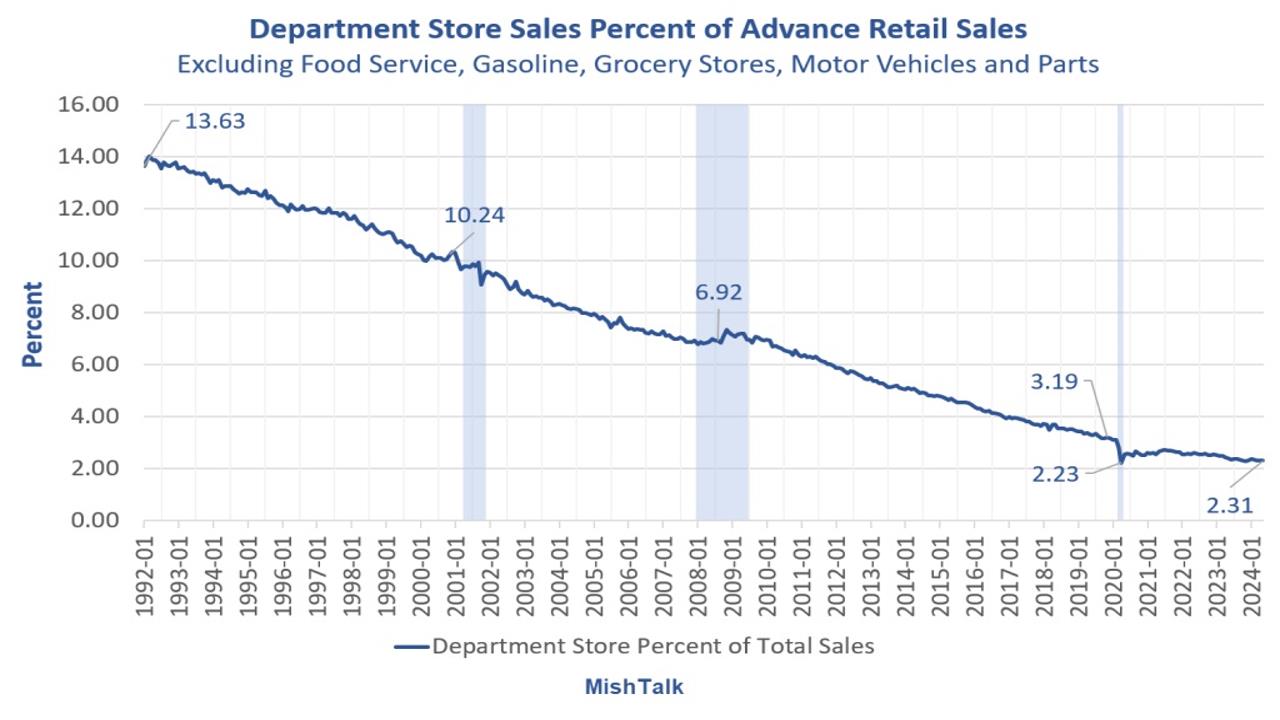Video:
Take our online poll:
AI Analysis:
The future outlook for department stores relative to online shopping is influenced by several factors, reflecting a shift in consumer behavior, technological advancements, and market dynamics. Here’s a comprehensive analysis:
- Consumer Preferences and Behavior
- Convenience and Accessibility: Online shopping offers unmatched convenience, allowing consumers to shop anytime and anywhere. This has led to a significant shift from brick-and-mortar stores to e-commerce platforms. - Personalization and Experience: Online retailers use data analytics to offer personalized shopping experiences, something traditional department stores have struggled to replicate.
- Technological Advancements
- E-commerce Platforms: Innovations in e-commerce platforms make online shopping more seamless, with features like one-click purchasing, easy returns, and fast shipping. - Augmented Reality (AR) and Virtual Reality (VR): These technologies are enhancing online shopping experiences, allowing consumers to try products virtually before purchasing.
- Economic Factors
- Cost Efficiency: Operating an online store is generally less expensive than maintaining a physical store, leading to competitive pricing and better deals online. - Global Reach: Online stores can reach a global audience without the need for physical presence in multiple locations, increasing their market potential.
- Retail Strategies and Adaptation
- Omnichannel Strategies: Successful department stores are adopting omnichannel strategies, integrating online and offline experiences. This includes features like buy online, pick up in-store (BOPIS). - Digital Transformation: Department stores are investing in digital transformation, improving their online presence, and enhancing customer service through chatbots, AI, and better website interfaces.
- Market Trends
- Shift to Specialty Stores: Consumers are increasingly turning to niche and specialty online retailers for specific products, bypassing general department stores. - Subscription Models: Subscription-based services and direct-to-consumer models are gaining popularity, offering convenience and tailored product offerings.
- Impact of COVID-19
- Acceleration of E-commerce: The pandemic accelerated the shift to online shopping, with many consumers forming new habits that are likely to persist. - Store Closures: Many department stores faced financial difficulties, leading to store closures and bankruptcies, further diminishing their presence.
- Future Outlook
- Decline of Traditional Department Stores: The traditional department store model is likely to continue its decline, with many closing or significantly downsizing. - Hybrid Models: The future may see more hybrid models where physical stores act as showrooms or fulfillment centers for online orders. - Experience-Centric Stores: Department stores that survive will need to offer unique in-store experiences that cannot be replicated online, focusing on customer engagement and experiential retail.
Conclusion: The future of department stores looks challenging in the face of online shopping's growth. To remain relevant, department stores must innovate, embrace digital transformation, and redefine their role in the retail ecosystem. Those that successfully integrate online and offline channels and focus on providing unique customer experiences may find a sustainable path forward.
Chart:

References:


Comments